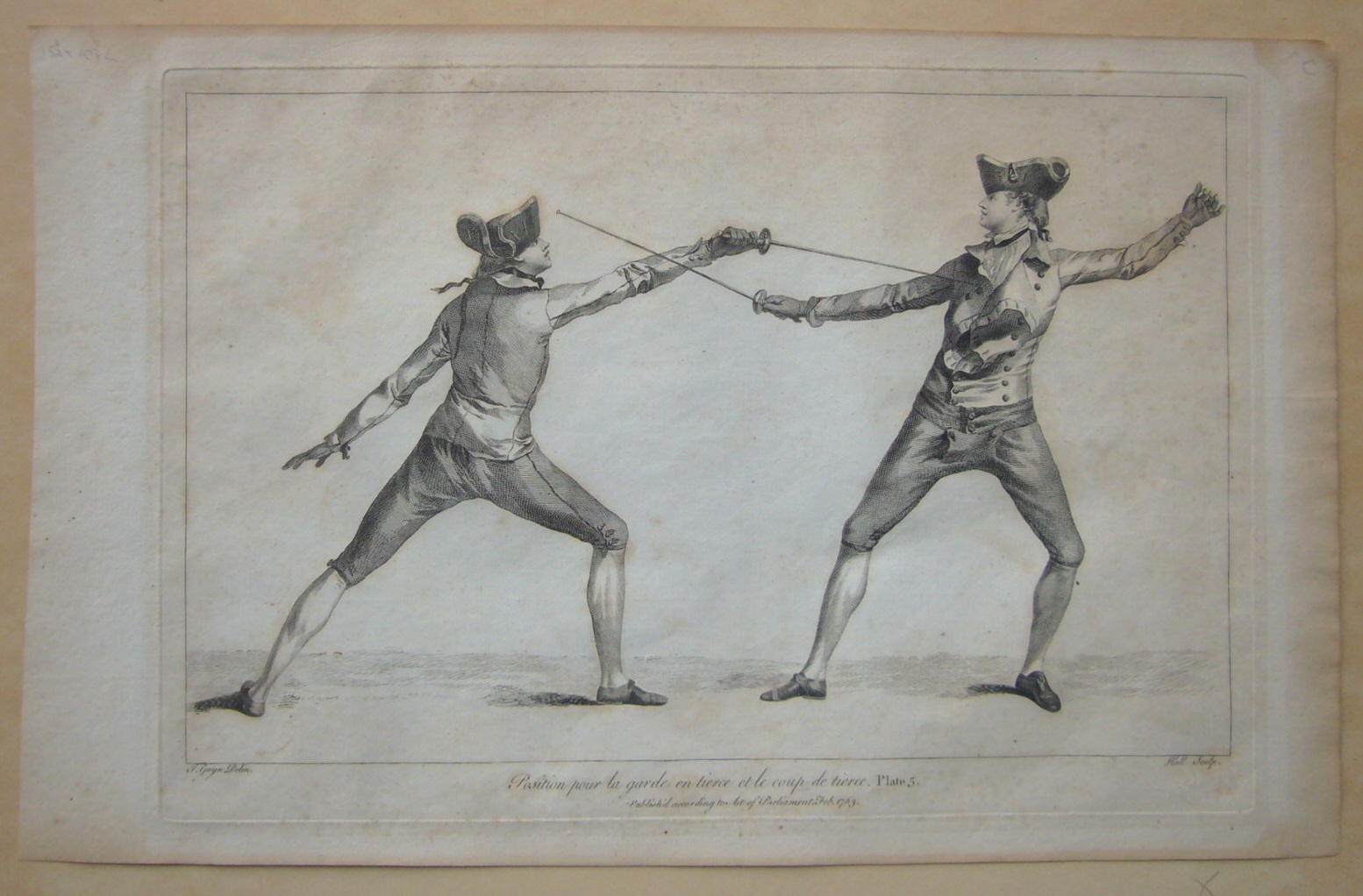
Fencing print from 1763 (Domenico Angelo’s instruction book)
Defense and status. Swordsmanship has been the subject of fascination for a long time in popular culture and history. It was one of the most used side arms during ancient times and became a symbol of status and self-defense in the Middle Ages and during the early modern age. Therefore, it wasn’t very convenient for an honorable nobleman to carry around a spear or some other battlefield weapon, so the sword was the proper solution to present yourself in front of the world, but also to protect yourself if attacked. The one who carried a sword needed to master the art of fighting. In the 18th century, that art demanded sharp skills and elegant moves.
One of the most famous sword masters of the 18th century was Monsieur L’Abbat. In his manual “The Art of Fencing”, he pays great attention to every detail of the sword fight. His lessons comprise techniques, tactics, stances, and movements every student needed to master if he wanted to become skilled in sword fighting. So, here are some of the thoughts from his book.
- Courage and skill are nothing without a good weapon.
- A man needs to choose the proper blade, proportionate to his body.
- The length of the blade should reach perpendicularly, from the ground to the abdomen.
- Some people wear blades that are too small. A blade too large or too small makes the one who wears it weak in case of attack.
- The blade shouldn’t have flaws. The best way to check it is to bend it against a wall or other object. It’s a good sign if it bends in a semicircular manner.
- By guard is a situation where all the parts of the body are prepared to defend or attack.
- The position of the body needs to be good and graceful and the motions easy and vigorous.
- The position of the body should communicate strength and agility.
- All the body parts need to be in harmony. That’s essential for good attack or defense.
- The point of the right foot must be opposite to the adversary’s for achieving the freedom of motion.
- The body must be upright, which gives it a better air, greater strength and greater liberty to advance and retreat, being supported almost equally by the two feet.
